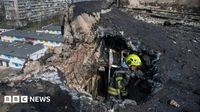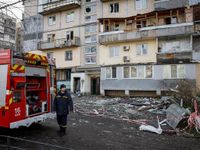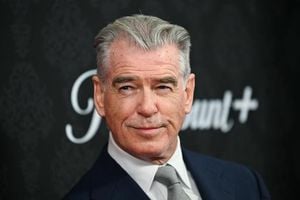In the midst of ongoing conflict and diplomatic activity surrounding the Russia-Ukraine war, high-stakes peace talks are set to take place, with the potential for temporary ceasefires amid continued military action. Multiple parties, including U.S. President Donald Trump, have engaged in discussions, yet significant challenges and casualties highlight the complex reality of achieving lasting peace.
As negotiations unfold in Saudi Arabia, delegations from the United States and Ukraine met on March 23, 2025, as part of an effort to broker peace amid ongoing violence that has seen multiple casualties. Ukrainian Defence Minister Rustem Umerov described the meetings as “productive and focused,” responding positively to the complex negotiations aimed at curbing three years of conflict sparked by Russia’s full-scale invasion. “We addressed key points including energy,” Umerov stated, accentuating the importance of their discussions surrounding critical infrastructure.
Despite the diplomatic overtures, the situation on the ground remains dire. Recent drone attacks in Ukraine highlighted the ongoing violence, with at least seven people killed, including three in a tragic strike in Kyiv that claimed the life of a five-year-old child. In a somber reflection of the reality faced by Ukrainians, President Volodymyr Zelenskyy expressed that “new pressure” is needed on Moscow to bring an end to the relentless assaults that have become an all too familiar nightmare for the populace.
Kremlin spokesman Dmitry Peskov acknowledged the arduous nature of the ceasefire negotiations, stating, “This is a very complex matter and a lot of work remains to be done. We are only at the beginning of this path.” His caution resounds throughout the negotiation landscape, where optimism meets skepticism. The upcoming discussions between U.S. officials and the Russian delegation on March 24 will follow the Ukrainian talks, as all parties continue to seek common ground amidst hostilities.
U.S. envoy Steve Witkoff remains cautiously optimistic, affirming his belief that real progress could be made in Saudi Arabia. “I just don’t see that he wants to take all of Europe,” Witkoff remarked, attempting to frame the negotiations under a light of potential cooperation. Yet, experts warn that any immediate resolution is unlikely, referring to political analyst Serhiy Taran’s insight that “the maximum result is a pause” in the violence, with tentative discussions expected to extend over forthcoming months.
Recent assaults carried out by Russian forces underline the fragility of the situation. On March 23, the Ukrainian Air Force disclosed the launch of 147 drones against its territory, with a concerted effort leading to 97 being intercepted. Zelenskyy lamented this violence, emphasizing that over 1,580 guided aerial bombs and numerous drone attacks have targeted Ukrainian civilians just within the past week. In response to the attacks, Russian officials reported intercepting 59 Ukrainian drones targeting predominantly southern regions.
Amid these increasing tensions, Trump’s involvement has taken center stage, as he engages both Russian President Vladimir Putin and Zelenskyy in pursuit of a framework that may allow for a cessation of hostilities. Following a recent call with Putin, Trump described efforts to halt further escalation as “somewhat under control.” However, hopes for an extensive 30-day ceasefire remain dim, as Peskov’s guarded statements suggest further complexities lie ahead.
While both sides appear to be mobilizing for diplomacy, the reality remains that direct meetings between Russian and Ukrainian delegations will not take place. Instead, the format reflects a “shuttle diplomacy” approach, potentially enabling different factions to explore agreeable terms. This arrangement mirrors past efforts in situations like Gaza, although many caution that cumbersome negotiations could lead to protracted durations with minimal tangible gains.
Zelenskyy’s agenda will include advocating for an understanding regarding Russian attacks on infrastructure, particularly in relation to energy facilities crucial for Ukraine's sustainability. The complexity added by these pressing humanitarian needs coincides with the ongoing military actions, reiterating calls for clearer strategies as the peace talks proceed.
“New solutions are needed, with new pressure on Moscow to stop both these strikes and this war,” Zelenskyy urged, signalling the dual challenges of negotiating peace while contending with active military conflict. As discussions continue, the looming reality of additional violence complicates efforts for any sort of leading agreement.
The hope remains that the proximity of all these players in Saudi Arabia will catalyze more constructive discussions. Nonetheless, as the world watches, the need for sustained diplomatic engagements persists, thrusting the fate of countless lives into the hands of local leaders and international statesmen alike.
Thus, as the situation in Ukraine unfolds, marked by the dual path of negotiations and ongoing strikes, the quest for a ceasefire faces both the weight of expectation and the challenge of immediacy. Observers will be looking closely as to how these negotiations—rooted in both urgency and the essence of unyielding warfare—may eventually reshape the landscape of the Russia-Ukraine conflict.







